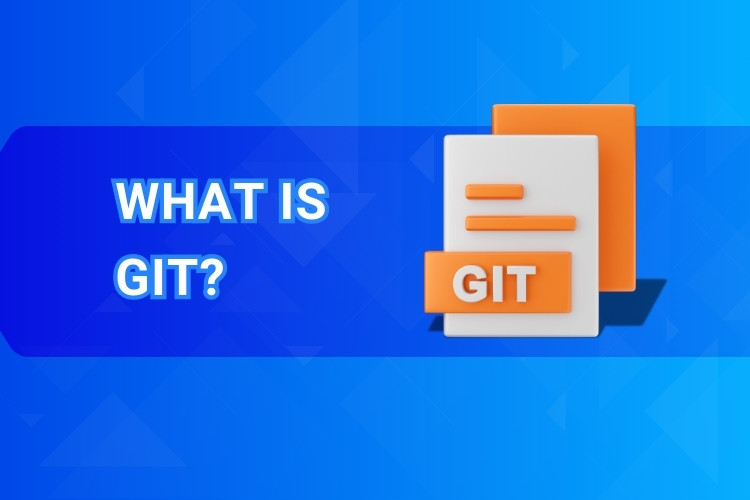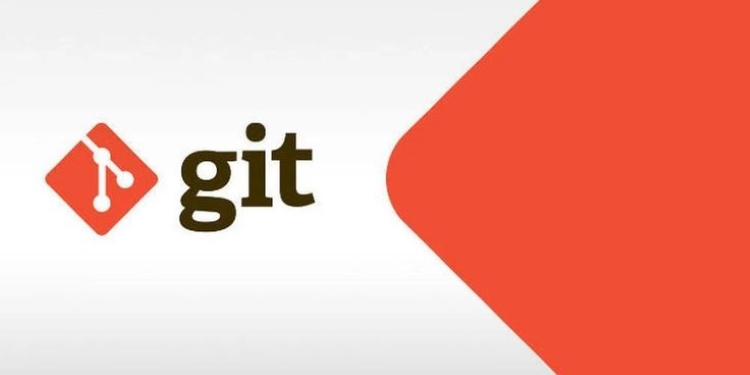Git is a free, open-source distributed version control system. It’s primarily used for tracking changes in computer files, most often coordinating work among programmers developing source code during software development. Its goals include speed, data integrity, and support for distributed, non-linear workflows.
Ever wondered how software developers manage huge projects with many people, keep track of every single change, and even travel back in time (sort of!) to fix mistakes? The magic behind much of this is Git! If you’re starting your journey in coding, tech, or just curious about what Git is, you’re in the right place.
This friendly guide breaks down this essential version control system in plain language. We’ll explore what it does, why you need it, and the basic concepts to get you started. Our aim is clarity for beginners, leaving confusing jargon behind. Let’s dive in!
Before Git: Why Do We Even Need Version Control?
Imagine working on a large document or project. How do you track revisions? Maybe you save multiple copies like report_v1.doc, report_v2_final.doc, or report_v2_final_REALLY_final.doc. This quickly becomes confusing and messy, especially when multiple people are involved.
This manual tracking changes process is prone to errors. You might accidentally delete the wrong version or overwrite someone else’s crucial work. It’s hard to know exactly what changed between versions or merge different peoples’ contributions reliably. This chaos significantly slows down projects.
Now, picture this scenario in software development, where code files are complex and interdependent. A small mistake can break the entire application. Collaborating without a system leads to confusion: “Did you update this file?”, “Which version is the latest?”, “How do we combine our changes?”. This highlights the need for a better way.
That “better way” is Version Control Systems (VCS). These are tools designed specifically to solve the problems of project history tracking and collaboration challenges. They provide a structured method to manage changes over time, making development safer and more efficient.
What is Git, Exactly?
So, what is Git specifically? Git is a modern, widely-used, free, and open-source Distributed Version Control System (DVCS). It was created by Linus Torvalds in 2005, the same mind behind the Linux operating system kernel. Think of it as the standard tool for managing code history.
Let’s break down that definition. A Version Control System (VCS), as we discussed, is software that helps you track and manage changes to your files. It records modifications so you can recall specific versions later. It’s fundamental for managing any evolving project, especially code.
The “Distributed” part of Distributed Version Control System (DVCS) is key to Git’s power. Unlike older centralized systems where the entire history lives on one server, Git gives every developer a full copy of the project’s history on their local machine. This improves speed and allows offline work.
Imagine DVCS like this: instead of everyone checking out files from a single central library (centralized VCS), everyone gets their own complete copy of the library. You can work on your copy, make changes, and then sync up with others when ready. This distribution makes collaboration flexible.
For a simple Git definition using an analogy: Think of Git like super-powered ‘Track Changes’ in your word processor, but for your entire project folder. It adds an unlimited ‘Undo’ capability and lets you create parallel ‘drafts’ (called branches) easily, all while keeping a complete history.

The “Why”: Key Benefits of Using Git
Understanding what Git is leads to the next question: Why use Git? What specific advantages does it offer, especially for software development teams and individual developers? The benefits are numerous and significant for efficient and safe coding.
1. Complete History Tracking: Git meticulously records every change (commit) made to your project. You can see who changed what, when, and why. This detailed project history is invaluable for understanding how the project evolved and for debugging issues when they arise.
2. Improved Collaboration: Git is built for teamwork. Its distributed nature means multiple developers can work on the same project simultaneously without stepping on each other’s toes. Features like branching and merging provide structured ways to combine contributions, making collaboration much smoother.
3. Experiment Safely with Branches: Need to try out a new feature or fix a tricky bug? Git’s branching capability lets you create an isolated copy (a branch) of your project. You can experiment freely on this branch without affecting the stable, main version of your code.
If the experiment works, you can merge it back. If it fails, you can simply discard the branch. This encourages innovation and reduces the risk of breaking the main codebase. It’s a crucial developer tool for non-linear development.
4. Error Recovery & Safety Net: Mistakes happen. Maybe you deleted a crucial file or introduced a bug. With Git, reverting to a previous working state is straightforward. Because Git stores snapshots (commits), you always have a safety net to fall back on, preventing catastrophic data loss.
5. Industry Standard: Learning Git is no longer optional for most software developers; it’s essential. The vast majority of development teams and open-source projects use Git. Proficiency with Git is a fundamental skill expected in the tech industry, enhancing your employability.
How Git Works: Core Concepts for Beginners
Okay, Git sounds powerful, but how does Git work fundamentally? While Git has many commands, understanding the core concepts is the first step. Let’s explore the essential building blocks without getting lost in technical details, keeping it git for beginners.
1. The Repository (Repo): The heart of Git is the repository (often shortened to repo). Think of it as your project’s dedicated database. It stores all your files, their history, and all the metadata about the changes (commits, branches, etc.).
Git uses two main types of repositories. A local repository is the copy stored on your own computer – this is where you do most of your work. A remote repository is typically hosted on a server (like on GitHub), acting as a central point for collaboration and backup.
2. The Commit: A commit is like taking a snapshot of your entire project at a specific point in time. When you make changes (add code, fix a bug) and you’re happy with them, you “commit” them. Each commit has a unique ID and includes a message describing the changes made.
This sequence of commits forms the history of your project. You can view past commits, compare changes between commits, and even revert your project back to a previous commit if needed. Committing regularly is a core part of the Git workflow.
3. Branches: Branching is one of Git’s most powerful features. Imagine your project’s history as a main road. A branch is like taking an exit ramp to work on something new (a feature, a bug fix) without disturbing the traffic on the main road (your stable code).
You can create as many branches as you need. Each branch evolves independently with its own set of commits. This allows developers to work in parallel without interference. The default branch is often called main (previously master).
4. Merging: Once the work on a branch is complete and tested, you’ll often want to incorporate those changes back into your main project line (e.g., the main branch). This process is called merging. Git helps integrate the changes from your feature branch into the target branch.
Sometimes merges are simple; other times, if conflicting changes were made on both branches, Git might need your help to resolve “merge conflicts.” This process ensures that different lines of development can be combined systematically.
5. Basic Workflow (Conceptual): A typical Git workflow involves these conceptual steps:
- Modify: You make changes to files in your project (your working directory).
- Stage: You select the specific changes you want to include in your next snapshot. This happens in the staging area (or index).
- Commit: You save the staged changes as a permanent snapshot (a commit) in your local repository, adding a descriptive message.
Later, you might push your local commits to a remote repository to share them or pull changes made by others from the remote repository to your local one.

Git vs. GitHub (vs. GitLab/Bitbucket): Clearing the Confusion
One of the most common points of confusion for beginners is the difference between Git and GitHub. Are they the same thing? No, they are related but distinct entities. Understanding this difference is crucial.
Git is the underlying version control tool itself. It’s the software you install on your computer, the engine that tracks changes, manages branches, and creates commits. Git is the core technology, free, open-source, and can be used entirely offline or with any compatible hosting service.
GitHub, GitLab, and Bitbucket are web-based platforms that provide hosting for Git repositories. Think of them as services built around Git. They offer a place to store your remote repositories online, plus many collaboration features like web interfaces, issue tracking, user management, and tools for code review (pull requests).
Here’s an analogy: Git is like the engine and steering wheel system for a car. GitHub (or GitLab, Bitbucket) is like the entire car dealership, the garage, the online dashboard, and the social club for car owners. You need the engine (Git) to make the car work, but the dealership (GitHub) provides the place to keep it and interact with others.
So, you use the Git tool locally to manage your project’s history. You then often use a platform like GitHub to host a copy of that repository, making it accessible to collaborators or backing it up online.
Is Git Hard to Learn for a Beginner?
Seeing terms like repository, commit, branch, and merge might make Git seem intimidating. So, is Git hard to learn, especially if you’re new to coding or development workflows? The honest answer is: it has a learning curve, but the basics are quite manageable.
The core concepts we’ve discussed – tracking changes, saving snapshots (commits), working in parallel (branches) – are logical once you grasp the problems they solve. You don’t need to master every single Git command immediately to start benefiting from it.
Focus initially on understanding the basic Git workflow: how to initialize a repository, make changes, stage them, and commit them. Learn how to view the history and perhaps how to connect to a remote repository on a platform like GitHub using commands like clone, pull, and push.
Many graphical user interface (GUI) tools are also available (like SourceTree, GitKraken, GitHub Desktop). These Git GUI clients provide a visual way to interact with your repositories, which can make learning easier than using only the command line (CLI), though understanding the underlying commands is still valuable.
The key is practice and patience. Start with small personal projects. Follow tutorials. Don’t be afraid to experiment (especially with branches!). The developer community offers vast resources, and mastering Git basics is a rewarding investment.

Conclusion: Your First Step into a World of Better Code Management
So, what is Git? It’s far more than just a file-saving tool. Git is a powerful, essential Distributed Version Control System (DVCS) that revolutionizes how developers manage code history, collaborate effectively, and protect their work. It enables tracking every change, safe experimentation, and seamless teamwork.
We’ve explored why version control is necessary, defined Git and its distributed nature, highlighted its key benefits, demystified core concepts like repositories, commits, and branches, and clarified the distinction between Git (the tool) and platforms like GitHub (the hosting service).
Understanding Git is a fundamental skill in modern software development and related tech fields. While it might seem complex initially, grasping the core ideas is achievable for beginners. You’ve already taken the crucial first step by learning what Git is and why it matters.
Ready to Dive In? Next Steps & Resources
Feeling ready to start using Git? Excellent! Here are some practical next steps and resources to continue your learning journey:
- Install Git: The first step is getting Git onto your computer. Visit the official Git website (https://git-scm.com/) for download links and instructions for Windows, macOS, and Linux.
- Learn Basic Git Commands: Focus on the essentials first. Look for tutorials covering:
git init: Create a new local repository.git clone: Copy a remote repository to your machine.git status: See the current state of your project.git add: Stage changes for commit.git commit: Save your staged changes.git log: View the project’s commit history.git branch: Manage branches.git checkout/git switch: Switch between branches.git merge: Combine branches.git pull: Fetch changes from a remote repository and merge them.git push: Send your local commits to a remote repository.
- Explore GUI Clients: If the command line seems daunting initially, try a Git GUI client like Sourcetree, GitKraken, or GitHub Desktop. They offer a visual interface for managing your repositories.
- Practice: The best way to learn is by doing. Use Git for your personal coding projects, even simple ones.
- Utilize Online Resources: Websites like the official Git documentation, GitHub Docs, GitLab Docs, Atlassian’s Git tutorials, freeCodeCamp, and Codecademy offer excellent Git tutorials and learning materials.
Embracing Git is a significant step in becoming a more effective and collaborative developer or tech professional. Good luck on your version control adventure!
